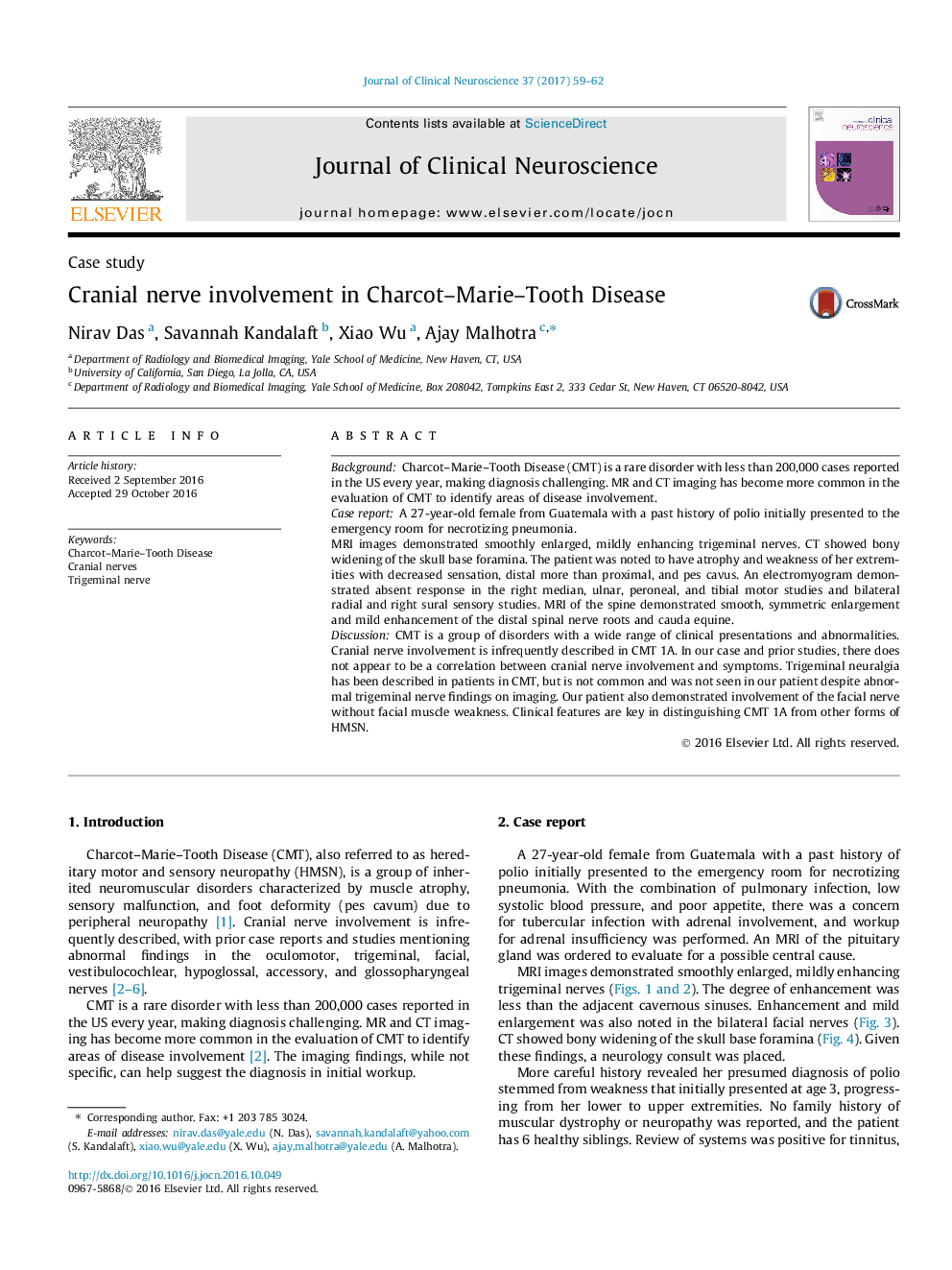| کد مقاله | کد نشریه | سال انتشار | مقاله انگلیسی | نسخه تمام متن |
|---|---|---|---|---|
| 5629988 | 1580279 | 2017 | 4 صفحه PDF | دانلود رایگان |

- Charcot-Marie-Tooth Disease can involve the cranial nerves infrequentlyâ¬.
- Imaging has poor correlation with clinical presentationâ¬.
- MRI demonstrates smooth enlargement and mild enhancement of cranial nerves.
BackgroundCharcot-Marie-Tooth Disease (CMT) is a rare disorder with less than 200,000 cases reported in the US every year, making diagnosis challenging. MR and CT imaging has become more common in the evaluation of CMT to identify areas of disease involvement.Case reportA 27-year-old female from Guatemala with a past history of polio initially presented to the emergency room for necrotizing pneumonia.MRI images demonstrated smoothly enlarged, mildly enhancing trigeminal nerves. CT showed bony widening of the skull base foramina. The patient was noted to have atrophy and weakness of her extremities with decreased sensation, distal more than proximal, and pes cavus. An electromyogram demonstrated absent response in the right median, ulnar, peroneal, and tibial motor studies and bilateral radial and right sural sensory studies. MRI of the spine demonstrated smooth, symmetric enlargement and mild enhancement of the distal spinal nerve roots and cauda equine.DiscussionCMT is a group of disorders with a wide range of clinical presentations and abnormalities. Cranial nerve involvement is infrequently described in CMT 1A. In our case and prior studies, there does not appear to be a correlation between cranial nerve involvement and symptoms. Trigeminal neuralgia has been described in patients in CMT, but is not common and was not seen in our patient despite abnormal trigeminal nerve findings on imaging. Our patient also demonstrated involvement of the facial nerve without facial muscle weakness. Clinical features are key in distinguishing CMT 1A from other forms of HMSN.
Journal: Journal of Clinical Neuroscience - Volume 37, March 2017, Pages 59-62